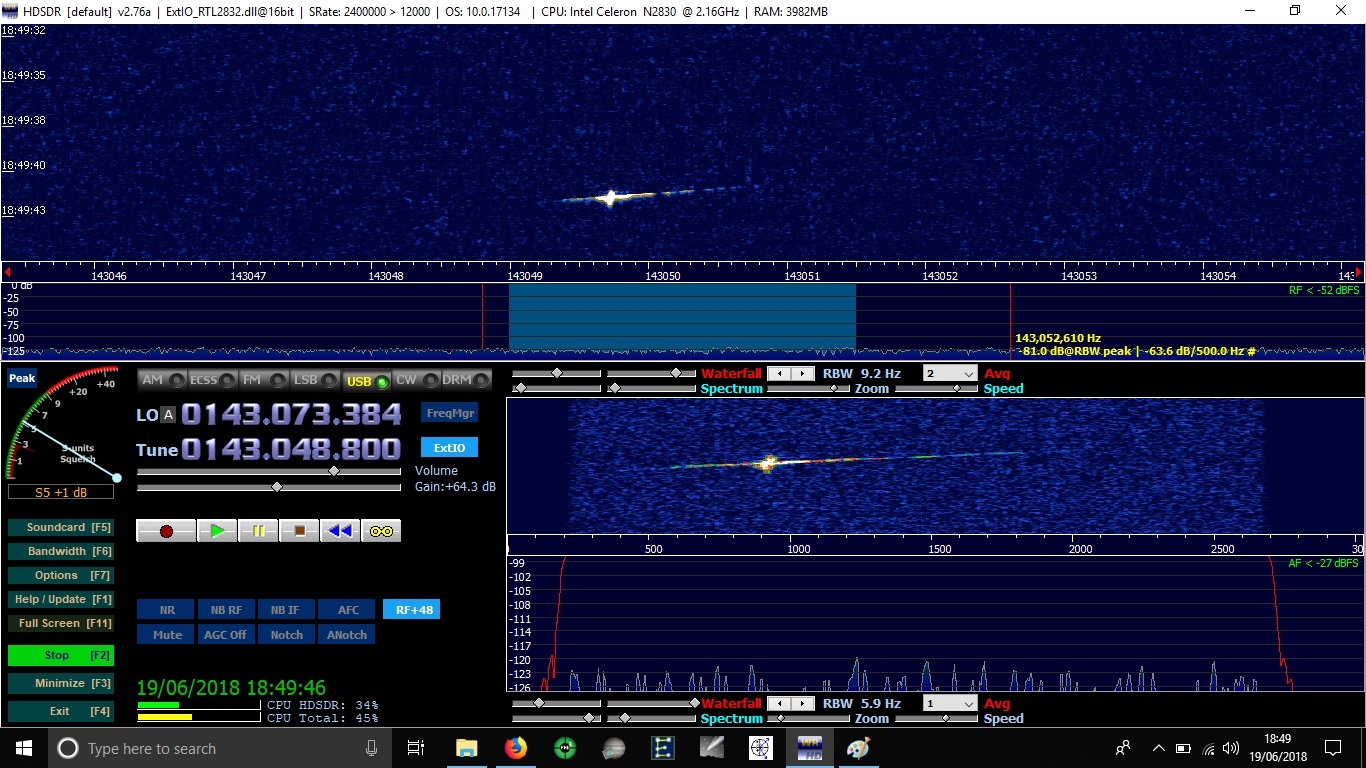To try and answer multiple posts.
As Geoff says it's a 'waterfall' display but falling upwards, so the oldest data is at the top.
Frequency is the x-axis and brightness/colour shows signal strength.
The big blob is probably a stationary, or just moving with the atmosphere, cloud/trail of ionisation left behind by the meteor. I haven't fully calibrated the receiver, but it's about 200Hz out so that would move the column close to the radar frequency of 143.050 MHz showing little doppler shift*.
The streak is probably a return from the intense (moving) patch of ionisation at the location of the meteor itself.
It's a good detection as most tracks only show one or other of these features, and typically much smaller.
What confuses me is that if the blob represents a velocity near zero, the trace suggests the meteor moves towards and then away from the receiver.
But… the Arietid meteor radiant was just below the horizon a bit beyond north-west. This suggests it came in from the direction of the north Atlantic heading south east, and where the line crosses the blob would represent the point of its closest approach. When the ISS passes over you see exactly the same sort of frequency shift through zero, although it changes much more gradually.
The frequency drop is 1,450 Hz (distance between two ends of the trail).
This makes the line of sight velocity change about 3,143 metres per second (yes online calculator!)
3.1kms/sec seems fast, but the Arietids arrive with a velocity of about 39 km/s.
A bit of trig gives an angle of about five degrees, OK that's rough and ready and assumes we see the full trace but does suggest the meteor was observed nearly fromxwwuio the side, providing a sensible explanation for the doppler shift going through zero.
Neil
*the Graves frequency is 143,050,000. Tuning to 143,048,800 and listening to the upper sideband means that an unshifted signal will be at 143,050,00-143,048,800 = 1,200Hz.
The fact I'm getting it at about 930Hz suggests the tuning calibration is 270Hz out, but measurements of terrestrial staions suggests.
 Neil Wyatt.
Neil Wyatt.






